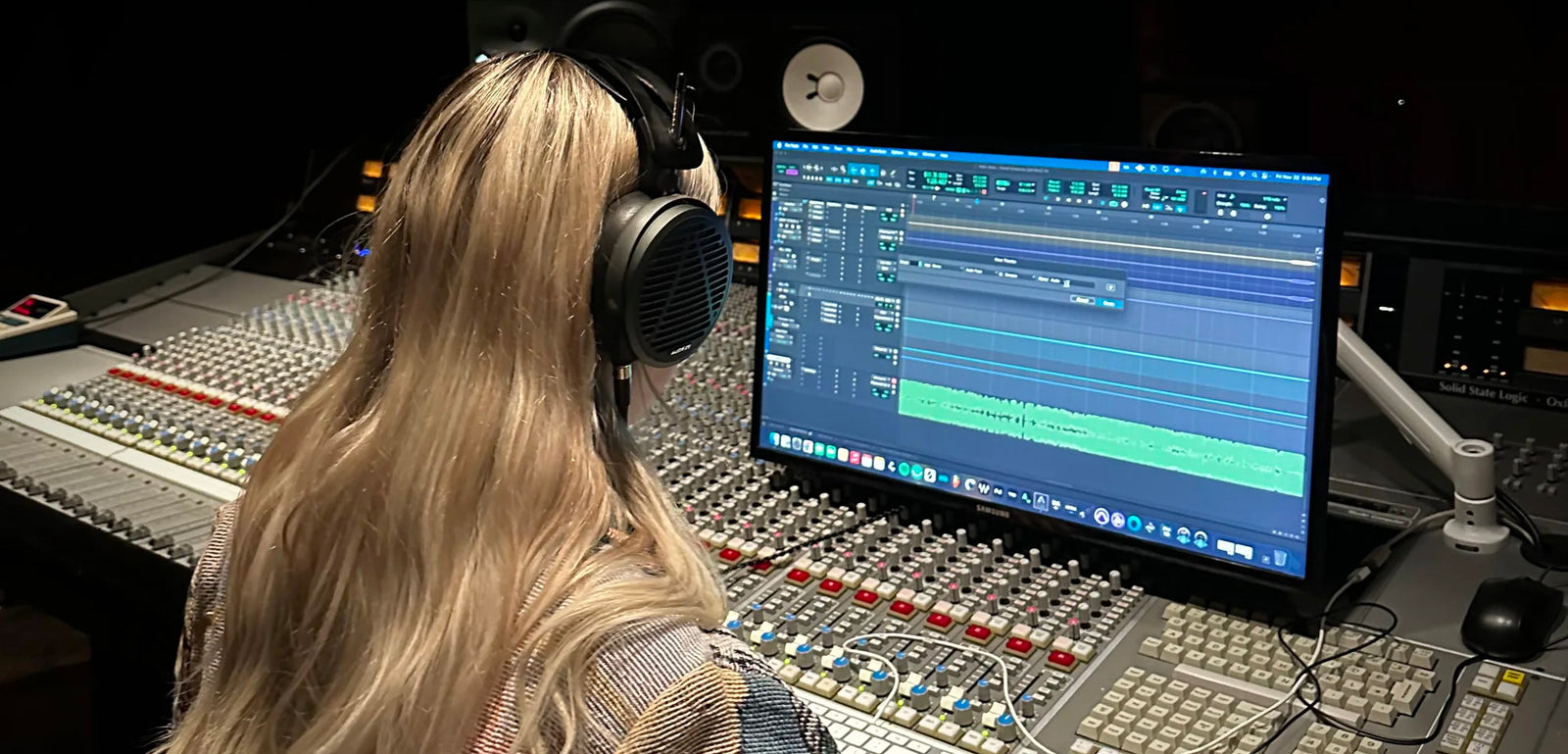
Angie Randisi is a highly acclaimed recording engineer and mixer from Canada, with three Grammy nominations and multiple platinum records to her name. Known for her technical prowess and keen ear, Angie has worked with some of the biggest names in the industry, including Lil Baby, Young Thug, Tory Lanez, 42 Dugg, Glorilla, and PartyNextDoor.

Josh Rogosin defined the tiny desk sound and has recorded and mixed over 800 shows, including Taylor Swift, Sting and Shaggy, Anderson .Paak, Mac Miller, Nile Rogers, and Bono and the Edge. His mixes have been heard on YouTube over a billion times. Now he’s introducing Global Sound and Ghost Light Concerts, traveling the world to discover how location inspires people to make music.

Li-sa-X is a Japanese female Guitarist/Composer who was born in 2005. Her cover video of RACER X's "Scarified," which she posted when she was 8 years old, garnered more than 5 million views and attracted a lot of worldwide attention. After watching this video, the composer of the song Paul Gilbert (MR. BIG) invited her to join his online guitar school as a scholarship student. She made her professional debut at the age of 12. Her playing technique has been described as “the future of rock."

Santaflow is an artist, composer, producer, entrepreneur, teacher and showman, politically incorrect and with millions of followers around the world (mainly in Spanish-speaking countries). After more than 20 years of career, he feels fitter and more eager than ever to continue creating songs and making them sound better every day. A restless lover of the world of sound, he works with several of the leading brands in the sector.

Fluxor™ Magnets - The power behind the sound. Audeze’s planar magnetic drivers use ultra-lightweight, micro-thin diaphragms to attain the pinnacle of transparency and resolution of sound. Keeping the diaphragm’s mass as low as possible is crucial to the design, but without the driving force of the Fluxor Magnet Array it doesn’t matter how light or thin we make the diaphragms, we’ll never be able to get the absolute most out of them. In other words, Fluxor magnets help harness the lightning so you can hear the thunder.
So why are magnets so crucial? The more powerful the flux density (the rate of magnetism flowing through a surface) the larger the magnetic force, which means higher acceleration of the diaphragms. A higher acceleration means a larger displacement of air. A larger displacement means a louder sound, and as we all know, louder is better! But beyond that, more flux density means more control over how the diaphragm moves, and that translates to more accuracy in sound reproduction -- faster transients, lower distortion, etc.
In technical terms, this means a higher Sound Pressure Level (SPL) or higher Efficiency (measured in dB/mW) can be achieved by increasing the magnetic flux, which is why we developed the Fluxor Magnet; to deliver that power and control that puts our headphones in another league.
In a typical set of planar magnetic cans, the way to increase the flux is to keep piling on more magnets. This means more weight on your head, and more diffraction (scattering of sound) because the additional magnets get in the way of the sound waves. The other traditionally used method (which is less effective) is to use a steel plate, called a stator plate, to redirect the flux back towards the diaphragm. Enter Audeze’s Fluxor Magnet Array.
Fluxor is Audeze’s patented technology that lets us pack more magnetic flux density (measured in Tesla) into our planar magnetic drivers without adding extra magnets or stator plates.
In a typical planar magnetic transducer design, only the magnetic field facing the diaphragm is used. The magnetic field on the opposite side of the magnetic array is either wasted entirely, or redirected by the stator plate. This is essentially like throwing half of your magnets away, and the only way around it is to add significantly more mass. Magnets and stator plates contribute the majority of the weight in planar magnetic headphones.
What if one could push all the magnetic flux (well, most of it) to the portion of the magnets facing the diaphragm, while having minimal flux on the opposite side? This is what we’ve done with our Fluxor Magnet Array.
It can be seen that in the non-Fluxor magnetic circuit used by the LCD-3 (Fig. 1, 2 and Fig. 3), in spite of an unconventional open circuit design and unused magnetic flux, there’s still a very uniform and strong magnetic flux of 0.5 Tesla between the magnets (red line in Fig 2). The LCD-3 circuit does not waste the space between adjacent magnets either (blue dotted line in Fig 2). Here too we manage to keep the flux both more uniform and stronger (Fig 4).



Compare that to Fig. 5, which shows a more conventional circuit design where magnets are laid vertically and stators are used to redirect some of the flux. Although this design works, it has some definite disadvantages: the stator does result in increased magnetic flux on the diaphragm, but this increase is not uniform, and the resulting force on the diaphragm is not uniform either. This can be seen in Fig. 6 and Fig. 7.


Using Fluxor magnets, we have managed to pack a whopping 1.5 Tesla between magnets in our LCD-4 headphones. This is similar to the magnetic field inside an MRI scanner! Rest assured audio fans, the magnetic field of 1.5 T is restricted to the gap between magnets and is cancelled outside, but you probably want to keep your credit cards away!
In a nutshell, here’s why Fluxor magnets rock:
In other headphones, magnets are magnetized either horizontally or vertically (Fig. 8). The Fluxor array uses a groundbreaking patented approach where the magnets are magnetized diagonally at a 45 degree angle, and arranged in pairs touching each other (Fig. 9). On each of these pairs, the North and South poles near the diaphragm correspond to corners facing away from each other and result in a larger magnetic field. On the opposite side, the North and South poles of the adjacent magnets touch each other and the magnetic field is nearly canceled out.

Audeze’s Fluxor magnetic technology allows us to create a stronger magnetic field for the same weight. Why does this matter?
To sum up, Audeze’s patented Fluxor Magnetic Array brings the thunder to the lightning, the icing to the cake, and the life to the party. Fluxor makes for the most efficient and distortion-free planar magnetic headphones on the planet… which makes your listening experience the best it can be.